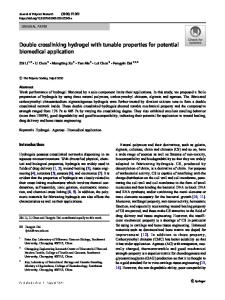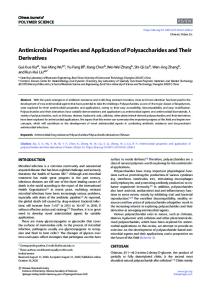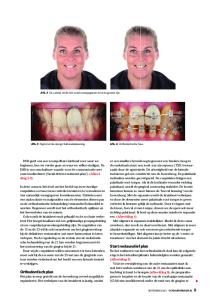Preparation of chitosan/safflower and ligusticum wallichii polysaccharides hydrogel for potential application in drug de
- PDF / 566,032 Bytes
- 9 Pages / 584.957 x 782.986 pts Page_size
- 45 Downloads / 326 Views
Biological hydrogel is important in drug delivery system and tissue engineering. In this paper, we prepared a series of biological hydrogels with N,O-carboxymethyl chitosan (CS) and oxidized safflower and ligusticum wallichii polysaccharide-II (oxidized SLWP-II). Morphological analysis indicated the N,O-carboxymethyl CS/oxidized SLWP-II hydrogels (CSLHs) had porous interior structures, pore diameter ranged from tens to hundreds of micrometers. In vitro release test showed, with proportion of N,O-carboxymethyl CS to oxidized SLWP increasing from 1:1 to 1:3, cumulative release of bovine serum albumin decreased from 99 to 82%. In vitro cytotoxicity study showed that the developed hydrogels were not cytotoxic during one week of culturing with WI-38 cells, and they have a role in promoting cell proliferation. So the N,O-carboxymethyl CS/oxidized safflower and ligusticum wallichii polysaccharide-II hydrogels might have potential application in the drug delivery system and tissue engineering.
I. INTRODUCTION
Hydrogels are macromolecular network materials, which has important medical applications. As we know, hydrogel is a polymer that can swell and is insoluble in water; and, which has a three-dimensional structure. These properties make it widely used to control release of drugs, immobilization of enzyme, and control of protease activity, etc.1 Early developments in hydrogels focused mainly on synthetic materials such as poly(ethylene glycol)/poly(butylene glycol) block copolymers, poly(ethylene glycol)/poly (lactic acid) block copolymers, and copolymers of N-isopropylacrylamide and so on. These materials are basically suitable for drug delivery, but they are nonbiodegradable and some of them have slight toxicity which limits their application.2 In recent years, to solve some drawbacks of synthetic materials, many people are concerned about the natural polymers, such as hydroxyethylacryl CS/alginate hydrogel films, alginate/polyoxyethylene hydrogels, alginate/gelatin hydrogels, and hyaluronate/polygalacturonic acid hydrogels and so on.1–3 Hydrogels prepared with natural materials not only have above-mentioned excellent properties, but also advantages like biodegradable, nontoxic, etc.3–5 So we prepared hydrogels with natural materials in this work.
Contributing Editor: Susmita Bose a) Address all correspondence to this author. e-mail: [email protected] DOI: 10.1557/jmr.2017.255
CS is a kind of natural polysaccharide obtained from the deacetylation of chitin.6 It was often used to make hydrogels for its biocompatibility, nontoxicity, biodegradability, and function of antihypertensive, antibacterial, and antineoplastic.7,8 However, CS is not water-soluble, acetic acid or other acids can facilitate dissolution of CS in water, which can generate cytotoxicity.9,10 Therefore, we utilize the covalent attachment of reactive on the –NH3 and C6–OH to produce hydrophilic groups and enhance the water-solubility of CS.11–13 Safflower/ligusticum wallichii polysaccharide-II are certain biological active ingredient from safflower and lig
Data Loading...











